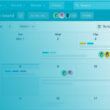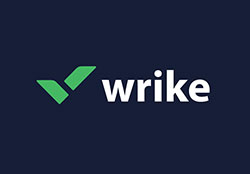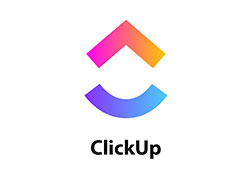Imagine a future. Not just any but one where every project you touch unfolds with precision—deadlines met as if by destiny, costs whispering right at your budget’s sweet spot. That’s the power of project management forecasting.
We’re talking about steering through uncertainties with a soothsayer’s clarity, about charts that tell more than just timelines, where risks bow down to your predictive prowess.
What lies ahead? A revelation of methods, models, and tools—those secret spells that conjure up forecasts you can bank on.
We’ll delve into the alchemy of Gantt charts and Monte Carlo simulations, navigate through the subtleties of resource allocation, and decode the enigma of cost projections.
Journey with me, and by the final dot of this guide, you’ll be armed with strategic foresight, ready to command any project’s horizon.
Ready for that edge? Let’s forecast the future of your projects, one insightful prediction at a time.
Key takeaways
- Project management forecasting is the practice of predicting project outcomes using historical data, trend analysis, and risk assessment, which are crucial for planning and stakeholder satisfaction.
- It relies on tools like Gantt charts or WBS for visualization and requires constant updating and change management as the project progresses.
- Accurate forecasting before project commencement helps assess total duration and scheduling, which is fundamental for risk reduction and meeting stakeholder expectations.
- Trend and predictive analysis enhance forecasting accuracy, especially when focused on deliverables and tracked through milestones, allowing for realistic performance forecasts and project success rate estimations.
Project Management Forecasting – A Definition
Forecasts revolve around assumptions of the various endpoints of a project, often visualized using tools like Gantt charts or the work breakdown structure (WBS).
The analysis changes as the project continues within a shifting time frame, requiring consistent change management.
However, random variations and demand forecasting make the project duration hard to predict. Still, honing in on future performance remains a feasible goal when starting with project forecasting and using project management tools.
The 20%-40% mark of the project completion, often referred to in rolling wave planning, is relevant for this method.
Taking a look back at those points in time, using methods like critical path method, speaks volumes about the project’s trajectory. Once you have enough data, compare the current standing with the original estimate and the project baseline.
Project Management Forecasting – Common Uses and Implications
Assessing the Total Duration and Project Scheduling
Before the start of the project, project managers must have an idea of the ballpark regarding the timeframe. This ties in with the supposed target the projects should meet in the end. To reduce risk and ensure stakeholder expectations, the project team first focuses on resource management and resource leveling.
Trend Analysis and Predictive Analysis
Extrapolating the end results of similar projects, using historical data, can shed light on the optimal resource allocation path and capacity planning. If prior projects show a linear trend, the survey method, combined with quantitative forecasting, can produce accurate forecasting of the total project cost and budget estimation.
Qualitative Data and Milestone Tracking
To realistically forecast performance and project success rate, you need to focus on deliverables. This means keeping an eye on all developments after the planning stage concludes. So, the forecasting tool gauges project performance each step of the way via fresh data and variance analysis.
Proper Budget Planning and Cost Control
The size of your staff and necessary equipment add to the starting cost of a project. However, theater stages introduce more space for sudden expenses and contingency planning. That’s why forecasting resource usage involves all of the possible outcomes and scenario planning.
To avoid overreaching, you’ll need to plan ahead and prepare for the first case scenario. When dealing with a looming deadline and time management, fine-tuning the remaining hours is even more important. Therefore, carefully weigh in any dependent variable when forecasting project activity and using project management tools.
Essential Tips for Forecasting and Project Control
Focus on the Immediate Future and Rolling Wave Planning
While historical data analysis is a helpful method, forecasting focuses on more pressing matters. Thus, an effective forecast project management yields currently applicable results. As the situation develops, up-to-date data and change management become more prevalent.
Reduce the Risk Factor and Risk Assessment
All forecasting techniques, including the Delphi method, aim to unmask the upcoming hardships. Even when dealing with fewer projects, you shouldn’t rely solely on regression analysis as a last resort.
Prevent Deviations From the Critical Path and Work Breakdown Structure (WBS)
When juggling multiple projects at once, the straight line or critical path method may become blurred. Next, accidental mishaps start to multiply and hurt your budget. Hence, prepare for such situations during the forecasting phase and ensure scope management.
Ensure Proper Cash Flow and Earned Value Management
Updating the monthly figures results in actionable quality markers. The resource costs, influenced by demand forecasting, may also change over time, producing new cash flow issues later. To avoid such corners, include only relevant data in your calculations and maintain a consistent project baseline.
Aim for Milestones, Achievements, and Task Prioritization
Successfully clearing a project goal can mean many things. A myriad of factors, like the list of objectives, project scheduling, and projected costs, funnel into this assertion. Thus, project managers direct the workflow, using tools like the work breakdown structure (WBS), to ensure a smooth string of completed sub-tasks and to meet stakeholder expectations.
Gain Usable Insight and Predictive Analysis
Forecasting, combined with trend analysis, can help you stay resourceful when dealing with various targets at once. Adjusting your plans within the forecasting process, and using project management tools, is a smart way to keep everything in check. That way, you’ll have an easier time micromanaging the competing tasks and ensuring scope management.
Fulfill Client Demands and Resource Allocation
Knowing when to outsource certain tasks, considering resource leveling, can take much of the pressure off. Yet, such execution relies on the usable knowledge, qualitative data, and quantitative forecasting at hand.
If done correctly, maneuvering outside of the base team, and ensuring proper change management, can easily result in a satisfied client and align with the project baseline.
Shoot for the Projected Project Completion Date and Cost Control
Any project forecasting technique, such as the Delphi method, puts extra attention on resource costs and budget estimation. Having the means to cover ongoing expenses across multiple projects, while ensuring earned value management, is the end goal. At the same time, assigning each team member to a fitting role, considering capacity planning, is equally important.
Hence, when forecasting, focus on what each person can do, how much a task will cost you, and the potential risk assessment. Then, derive the optimal way to spread your resources, using methods like rolling wave planning, and leave nothing up to chance. This ties in with the goal of passing a given profit margin and maintaining a consistent project performance.
Are you looking for a great project management app?
Here are our recommendations:
Forecasting Basic Techniques and Project Planning
Qualitative Forecasting Technique and Expert Judgments
Taking expert opinion into account is as important as using raw numbers and data.
At the start of the project, relying on such insights, combined with stakeholder expectations and scenario planning, can paint a detailed picture of what to expect.
Plus, you probably won’t have actual numbers to orient upon at that stage.
Similarly, trying your hand at a new business model or change management requires qualitative forecasting most of the time.
It may even allow you to project results way further down the line using methods like the Delphi method. However, which path you’ll take will depend on your personal judgment and risk assessment.
Quantitative Forecasting Technique and Data Analysis
Short-term forecasting often uses measurable data to gauge performances.
So, it focuses on the project tasks completed thus far, using tools like work breakdown structure (WBS), to summarize the total project progress. For example, using actual sales numbers, combined with demand forecasting, can show you what to expect later on.
This method uses applicable patterns and historical data as well. Also, take the full scope management of the project into account when predicting the final outcome. Here are a few examples of relevant techniques for this:
Trend analysis and Predictive Analysis
Trend projections (straight-line forecasting) revolve around spotting trends and deciding whether to follow them, considering project metrics.
To that end, this method uses current project spending data and variance analysis. Although often rough estimates, such approaches correlate with the goal of profitability and project baseline.
Cost-benefit analysis and Project Control
This method starts by shortlisting the costs, benefits, and other values a project entails. Next, it’s about comparing the end outcome of one ongoing task with another prospect, ensuring resource allocation.
That way, managers can better decide how to allocate resources, using resource leveling, and prioritize certain tasks with task prioritization.
Break-even analysis and Financial Forecasting
As the name implies, this method focuses on whether a project can be worth its initial costs, considering project budget.
Thus, investors will know if a given series of tasks may lead to a wanted result. In other words, if an endeavor can generate enough funds to at least cover for itself, ensuring earned value management.
Forecasting Tips, Tricks, and Best Practices in Project Management
Organize All Relevant Data and Use Project Management Tools
Project managers should start by grouping the available data. This task often includes sheets, various software, and project management software to ensure project control.
Know Your Team Members and Resource Allocation
Successful forecasting demands having detailed insight into your team primarily. So, make sure to take their strong suits into account when assigning new roles.
Also, consider expanding their skill set, using capacity planning, and finding a fitting position for each to ensure optimal resource leveling.
Don’t Rely Solely on Historical Data and Use Predictive Analysis
While a great starting point, historical data shouldn’t linger in focus later on. Instead, you should keep on populating the timeline with fresh data, variance analysis, and look for patterns in trend analysis.
Calculate Proper Leeway and Contingency Planning
Even the most accurate forecasting report, using methods like the Delphi method, will start showing dents at some point. Hence, remember to input buffer time between tasks to ensure you won’t lag behind and maintain a consistent project baseline.
In other words, don’t underestimate a task and create more issues once the project begins, ensuring proper scope management.
Have Multiple Plan Bs and Scenario Planning
Instead of going all in on one forecasting effort, it’s better to craft several that you can later combine. Randomness is always a factor in forecasting, so covering as many fronts as you can, using rolling wave planning, should be your main goal.
Present Your Findings Clearly and Stakeholder Expectations
Cost estimation is a key principle of forecasting, but knowing how to present it is also pivotal. Therefore, once you collaborate with the right team to gather data, ensure to document it well. Afterward, all team members will easily get up to speed in terms of project performance.
Identify Project Blockers and Risk Assessment
Recurring problems, or potential project risks, may combine, escalate, or even sink a project. To prevent such an end, diligently observe the workflow using project metrics. If there are common pain points, do all that’s necessary to remove them and ensure change management.
Take a Thorough Look Back and Earned Value Management
Before your next project, review your starting forecast for the recently completed one. Focus on the costs of each phase and your teams’ efficacy. If the actual timeline differs a lot from the projected one, try to learn from your mistakes and adjust your project baseline accordingly.
FAQ On Project Management Forecasting
Why is project management forecasting essential?
Forecasting in project management—it’s like having a crystal ball but one backed by data. It’s vital because it allows you to predict project outcomes, prepare for potential pitfalls, and guide decision-making. Think of it as the road map for success; it keeps you on the best path, away from unnecessary detours.
How do you create a project forecast?
Start with your baseline—where are you now? Pinpoint that, then scrutinize past projects, pinpoint patterns, integrate risk analysis, and wield your project management tools like Asana.
Combine those insights with quantitative analysis and, voila, you’ve crafted a forecast that’s both an art and a science.
What tools are best for project forecasting?
Your arsenal should include robust project management software capable of juggling budget planning, timeline estimations, and resource allocation.
Popular options? Microsoft Project and Smartsheet rank high for adaptability. Folks in the Agile loop might lean towards JIRA or Trello, where Kanban boards reign supreme.
Can Agile methodology include forecasting?
Absolutely. Although Agile is iterative, forecasting fits snug in the process. Think Agile forecasting as reading tea leaves but in quick sprints. You assess, adapt, and predict on-the-go.
Your Agile methodology tools will factor in sprints, user stories, and backlog management for a streamlined forecast with flexibility baked right in.
What role does risk analysis play in project forecasting?
Risk analysis is your safeguard. It means you’re scanning the horizon for storms before they brew. Integrating it into your forecasting shines a light on potential hiccups—maybe resource scarcity or budget blow-ups.
With risk squarely on the map, you can chart a safer course, buffering your project from nasty surprises.
How accurate is project forecasting?
Well, it’s not psychic-level precise but ain’t just wild guessing. Accuracy in forecasting hinges on the quality of your data, forecasting models, and how well you’ve learnt from past projects.
It’s an educated estimation that refines itself over time. Strive for accuracy, but always pack an umbrella for unexpected showers.
What is the difference between qualitative and quantitative forecasting?
Qualitative forecasting—it’s all about gut feel, intuition, and expert opinions. Think the Delphi technique meets stakeholder management pow-wows.
Quantitative? That’s number crunching, patterns, and statistical models taking the wheel—like the time series analysis or regression models. Both have their place, their strengths; savvy forecasters often blend them.
Does forecasting apply to all project types?
Indeed, it does. Whether you’re erecting skyscrapers, launching ad campaigns, developing software, or planning events—every project type gets a leg up with solid forecasting.
Customizing your forecasting approach to suit the project’s nature is key—resource allocation in construction might take precedence over workflow prediction in marketing.
How do you handle forecasting for a long-term project?
Long-term projects test your patience and foresight. You need to take baby steps, breaking them into digestible chunks—think project phases or milestones. Tools like earned value management come in handy here. They let you periodically re-forecast based on current performance indicators.
Can project management forecasting improve project success rates?
You bet it can. With savvy forecasting, you’re not shooting in the dark; you’re making sharp, informed decisions that align with your project’s compass. It’s a way to amplify your foresight, keep your team a step ahead, and boost those success rates. It’s not a silver bullet, but it’s the next best thing.
Conclusion
Charting the course, that’s what we’ve done here today. Project management forecasting; it’s not just a lofty ideal but a nuts-and-bolts strategy weaving through every project’s fabric. We’ve seen its many faces—from the agility of scrums to the steadfastness of Gantt, from the mystic might of Monte Carlo to the plain predictability of a well-plotted PERT chart.
By now, you’ve grasped how forecasting isn’t just about peering into a crystal ball—it’s rooted in the real, tangible world of resource allocation, budget planning, and risk analysis.
- We’ve learned the importance of matching the right tools with the project at hand, be it project management software or critical path method.
- We’ve recognized the power of blending qualitative and quantitative analysis—a symphony of data analytics and human intuition.
With this compendium, you’re set to forecast with the best, carving out success stories in the project landscapes that lie ahead. So go on, forecast boldly, execute bravely.
If you liked this article about project management forecasting, you should check out this article about what is crashing in project management.
There are also similar articles discussing project management software for startups, s curve in project management, innovation frameworks, and lag time in project management.
And let’s not forget about articles on primary and secondary stakeholders, gold plating in project management, operations management vs project management, and project management OKRs.
- Building Customer Relations By Obeying Data Privacy Regulations - April 24, 2024
- A Cohesive User Interface: Advanced Design Trends of Mobile Apps - April 24, 2024
- Organize Your Life: Productivity Apps Like Trello - April 23, 2024













